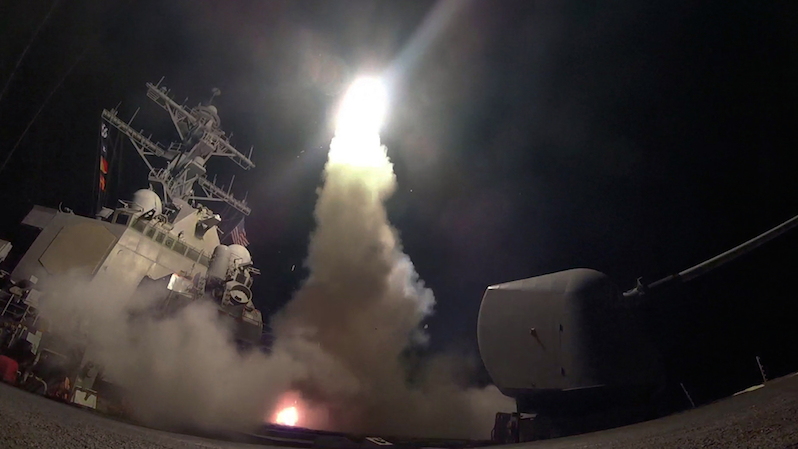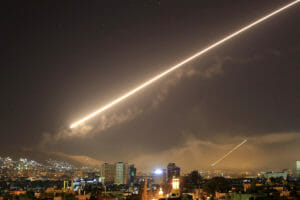Dereliction of Duty, Redux
All the evidence in Syria leads to an inescapable conclusion: The American military strike was a violation of international law. The guided-missile destroyer USS Porter launches a Tomahawk land attack missile aimed at Shayrat air base in Syria on April 6. (Mass Communication Specialist 3rd Class Ford Williams / U.S. Navy via AP)
1
2
3
4
The guided-missile destroyer USS Porter launches a Tomahawk land attack missile aimed at Shayrat air base in Syria on April 6. (Mass Communication Specialist 3rd Class Ford Williams / U.S. Navy via AP)
1
2
3
4

The guided-missile destroyer USS Porter launches a Tomahawk land attack missile aimed at Shayrat air base in Syria on April 6. (Mass Communication Specialist 3rd Class Ford Williams / U.S. Navy via AP)
Independent journalism is under threat and overshadowed by heavily funded mainstream media.
You can help level the playing field. Become a member.
Your tax-deductible contribution keeps us digging beneath the headlines to give you thought-provoking, investigative reporting and analysis that unearths what's really happening- without compromise.
Give today to support our courageous, independent journalists.





You need to be a supporter to comment.
There are currently no responses to this article.
Be the first to respond.